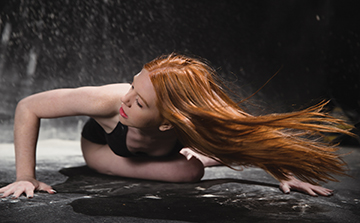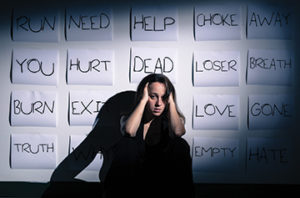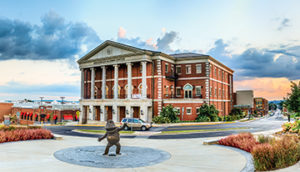
by Thomas Stewart Helms
Growing up with albinism, I’ve always seen and experienced the world differently from most people. A question I was often asked during my childhood dealt with how my vision was different from people with normal vision. The answer to that question wasn’t and still isn’t an easy one because having lived my entire life with my visual impairment, I don’t know what normal vision is, having never experienced it. However, despite my challenges with vision, during my youth I took an interest in photography, learning from my father that documenting the moment, documenting life events and memories, was important. He instilled in me that at the end of the day, out of all our possessions, it is our memories that we value most. Photographs represent our memories, and photographs trigger our memories like nothing else.
However, it wasn’t until just over a year ago that my mild interest in photography developed into a passion. In April 2016, I was preparing for a trip to Germany to study abroad with the Kentucky Institute for International Studies, and I wanted to be prepared to document the entire experience, not just for myself, but for the nine other students and two instructors. So I took the leap and purchased my first Canon DSLR. Additionally, I made a point to learn the basics of photography and how to get the most out of my camera. Durin
g the trip, my passion for photography blossomed, and I ended up taking over 1,500 photos during the five-week trip, one of which is the photo of Schloss Neuschwanstein in Bavaria, the iconic castle after which Walt Disney modeled Cinderella’s castle.

Upon my return from Germany, I was hooked! I needed to learn all I could and hone my skills. I enrolled in an Introduction to Digital Photography course as an elective at WKU, and during the course of the fall semester, I continued to refine my technique. Thirsting for more knowledge, I enrolled in a lighting course, during which I not only learned a great deal about lighting for photography but also learned to step outside my comfort zone, meeting new people and expanding my horizons. I gained confidence in my abilities and seized opportunities to take some spectacular photographs; among them is the photograph I captured of Air Force One landing in Louisville back in March. At times I have become frustrated because I couldn’t get a shot to look how I wanted. In particular, in order to capture the photograph of Jefferson’s bourbon seen here, I spent an entire night in the studio on campus perfecting the shot. In May, at the conclusion of this past semester, my thirst for knowledge still unsatisfied, I made the decision to add a photojournalism minor to my degree.
During my experience abroad, I became friends with another member of our group, Layne Porter, a ballerina, who I have had the pleasure of working with a few times this past spring. Working with Layne is always fun because she brings a creative energy to the set that is contagious. Specifically, during one of our shoots, I captured what is quite possibly my favorite photograph. The phot depicts her sweeping across the frame, her stunning red hair trailing behind her as if it were flames blowing in the wind.
Recently, having seen my work, a talented young architect, David Mayo of Studio Mayo in Louisville, approached me to help him in documenting an innovative project he just completed. Upon seeing the space, I was honored to assist. In designing this project, he made bold design choices including hills and mounds of artificial turf that employees can sit on and work on with their laptops as if they were outdoors, a light-colored wood floor, and the use of windows, glass walls, and one-way mirrors to incorporate the available light from outside. Another integral part of the design was instead of a reception area with a normal receptionist, he modeled it after a café with a barista rather than a receptionist. To top things off, he was able to design this space within the same budget that it would have cost to build a standard cubicle farm with bland walls, fluorescent lights and industrial carpet.

Currently, I am working on a project documenting the effects of so-called “invisible” mental illnesses such as depression and anxiety in order to raise awareness about the highly stigmatized topic. This project started as a topic for my final assignment for the lighting class. However, due to the overwhelming interest I received from the community, I decided to continue the project and work with anyone who was willing to come forward and speak out about their unique struggle with these illnesses. Having personally struggled with depression throughout my life, this is a project that I feel strongly about. I sit down and take the time to learn about each individual’s battle and attempt to capture how depression, anxiety, etc. affects each person differently. Furthermore, I have them write out a caption about their unique experiences that accompanies each photo.
I entitled this article “Learning to See Through the Lens” because learning to take photographs that speak to people – photographs that stir the soul – is like learning to see all over again. And while I still don’t have a great answer to the question posed to me throughout my childhood about my visual impairment, I have found that my photographs allow me to share my experiences and vision of the world with everyone else.
For more information about Thomas Helms Photography, email him at thomas.s.helms@gmail.com.
